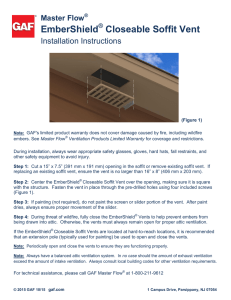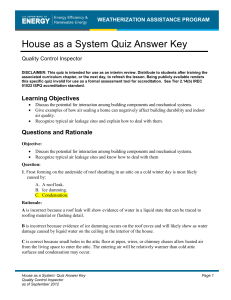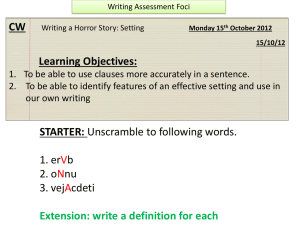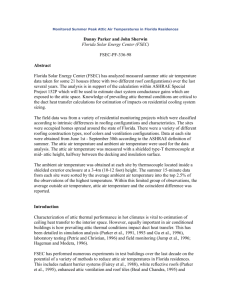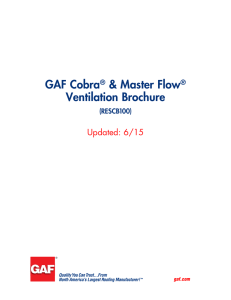Attic Ventilation - Weatherization Assistance Program Technical
advertisement
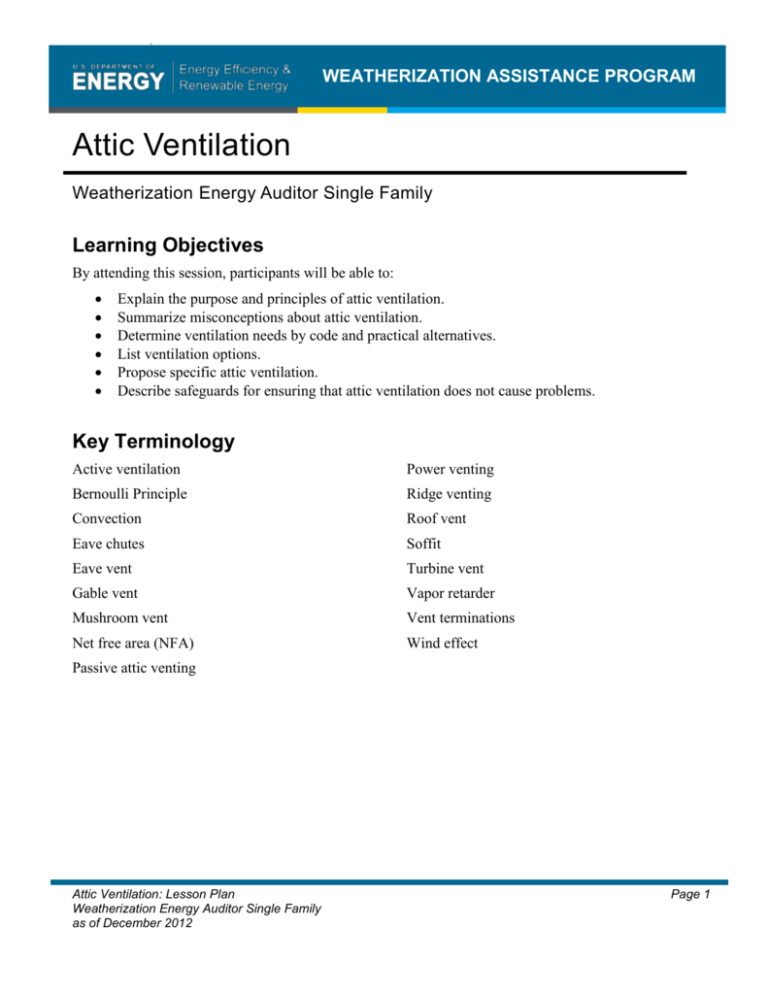
WEATHERIZATION ASSISTANCE PROGRAM Attic Ventilation Weatherization Energy Auditor Single Family Learning Objectives By attending this session, participants will be able to: Explain the purpose and principles of attic ventilation. Summarize misconceptions about attic ventilation. Determine ventilation needs by code and practical alternatives. List ventilation options. Propose specific attic ventilation. Describe safeguards for ensuring that attic ventilation does not cause problems. Key Terminology Active ventilation Power venting Bernoulli Principle Ridge venting Convection Roof vent Eave chutes Soffit Eave vent Turbine vent Gable vent Vapor retarder Mushroom vent Vent terminations Net free area (NFA) Wind effect Passive attic venting Attic Ventilation: Lesson Plan Weatherization Energy Auditor Single Family as of December 2012 Page 1 WEATHERIZATION ASSISTANCE PROGRAM Supplemental Materials Handouts & Resources Canadian Mortgage Housing Corporation. “Attic Venting, Attic Moisture and Ice Dams.” Fact Sheet C-13. <www.cmhc-schl.gc.ca>. Fisette, Paul. “Q&A: Roof Venting in a Wet Climate.” Journal of Light Construction Feb. 2011. <www.jlconline.com>. Rose, William B. “Early History of Attic Ventilation.” Building Research Council – School of Architecture, University of Illinois at Urbana-Champaign. 1995. Van der Meer, Bill. “Avoiding Moisture Problems.” WTC Technical Update 1.1 (Feb. 2003). Weatherization Training Center at Pennsylvania College of Technology. <www.pct.edu>. Woods, Tony. “Reexamining Roof Ventilation.” Home Energy Nov./Dec. 2000: 14-18. <www.homeenergy.org>. Online Platform Lessons Use these online interactive training modules as prerequisites before students attend the course or as in-class computer lab sessions. To access the lesson, users must first create an account at www.nterlearning.org. a- 2.3 Attic Assessment https://www.nterlearning.org/web/guest/course-details?cid=248 Relevant Standard Work Specifications 4.1001.4 – General Preparation, Vented Eave or Soffit Baffles 4.1006.3 – Attic Openings, Whole-House Fan 4.1088.1 – Special Considerations, Attic Ventilation Classroom Props & Activities Sample vents, including: Gable vent Roof vent Eave vent Turbine vent Mushroom vent Point out the net free area specifications stamped on each vent. Discuss the uses for each type of vent per the speaker notes. Page 2 Attic Ventilation: Lesson Plan Weatherization Energy Auditor Single Family as of December 2012 WEATHERIZATION ASSISTANCE PROGRAM Ventilation Principle Demonstration: Fill a clear soda or water bottle with smoke from a smoker puffer. Blow across the top of the bottle as if you’re about to play a tune, and watch as the smoke rises and exits the bottle. Class Overview Ask students leading questions about their perceptions of attic ventilation. Use anecdotes from the field. Use the presentation, discussion, and handouts to introduce students to the key elements of attic ventilation for selection and placement of attic vents. Use slides to illustrate the principle of how ventilation works. As air moves across a roof vent opening, a negative pressure occurs in the attic, causing air to be drawn out of the attic space. Demonstrate the principle with a clear bottle as described above. Use the vent calculation slides to demonstrate how the number of required vents is calculated based on the data provided in the slide. An optional class exercise is to make up new data and ask students to work up the answers using the same formula but with different assumptions. o Example: Calculate the number of roof vents required for a ranch home with a gable roof and an insulated and air-sealed ceiling that measures 40 ft. x 30 ft. Each vent has a net free area of 60 sq. in. 1. Calculate number of sq. ft.: 1,200 sq. ft. ÷ 300 = 4 sq. ft. 2. Convert sq. ft. to sq. in.: 4 sq. ft. x 144 sq. in./sq. ft. = 576 sq. in. 3. Calculate number of vents: 576 ÷ 60 = 9.6 (10 roof vents). Attic Ventilation: Lesson Plan Weatherization Energy Auditor Single Family as of December 2012 Page 3
